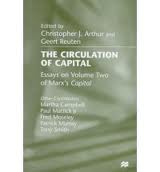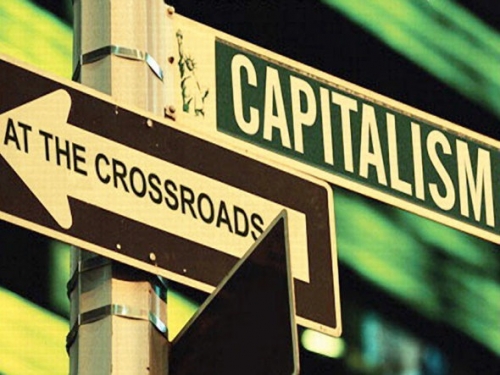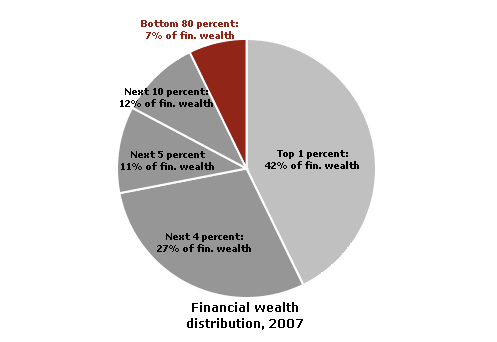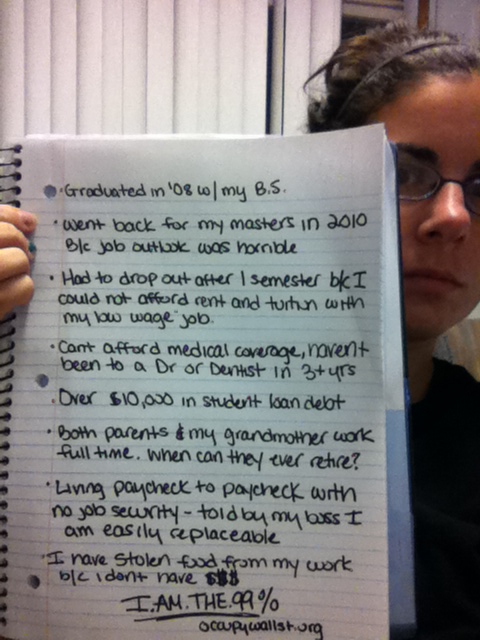– written October 1979 by Arthur Dent, who was then Albert Langer
This was referred to in a recent discussion on another thread. The political points made are still very relevant to our critique of the pseudo-left. It also has some further historical interest in that computer technology has come a long way since then. An old but still relevant response and an answer to that response has been omitted for now, since the opening argument is longer than a normal blog post, but is available here (scroll down) for those interested in further elaboration of the argument. (these introductory comments written by Bill Kerr)
The following outline for an article is unfinished, incomplete, out of sequence and lopsided in emphasis. A major section or companion article on Braverman’s “Labor and Monopoly Capital” has not been prepared yet.
1. Objections to the trend of modern technology and economic growth may be summarised under the following headings:
a) Eco-catastrophe
b) Environmental degradation
c) Limits on Growth
d) Third World Dependency
e) Wasteful Consumption
f) Technocratic Priesthood
g) Centralisation
h) Unemployment
i) Commercialisation and rat race
j) Degradation and Deskilling of Labor
2. These themes are all part of the very fabric of “left wing” and “radical” thinking in Western countries. Reference to them, often in a glib and trendy way, has become a trade mark to distinguish “them” (“the establishment”) from “us” (“the radicals”). Rejection of these themes is generally considered heretical and a sign of impending desertion to the other side.
3. Nevertheless, Third World revolutionaries actually engaged in armed struggle against imperialism, the classic founders of scientific socialism and the leadership of socialist countries have never stressed these themes in the same way. This paper will challenge the widespread assumption that emphasis on these themes reflects a more “advanced” conception than other “simplistic” views, and will show that a polemic against opinions that are now most fashionable among the “left” was a central feature of the development of scientific socialism (by which I mean “orthodox” Marxism, or Marxism-Leninism).
4. This paper has nothing new or startling to say but will simply try to raise the banner of a position of whose existence most “radicals” seem quite unaware, without undertaking a comprehensive defence of that position. Since in surveying the literature I couldn’t find a single article advocating the position I hold, and which I understand to have always been the “orthodox” Marxist view on these questions, I felt obliged to write one myself. Any assistance from readers who can point me to relevant material would be most appreciated.
5. The major trends among Western “radicals” on issues concerning technology and progress can be summarised as follows:
a) Outright opposition to modern technology and nostalgia for the past, summed up in the slogan “Small is Beautiful”.
b) Acceptance of modern technology if society was socialist, but Luddite hostility towards it in capitalist society, summed up in the slogan “For Whom”.
c) Acceptance of modern technology in present day capitalist society but a rejection of the social relations that have developed together with it and a romantic “nostalgia for an age that has not yet come into being”, where the dignity of craft skills will prevail.
The dominant view is of course an eclectic mixture of all three, sometimes even combined with views taken from the pro-technology, pro-growth camp.
6. In the camp which rejects the main objections to economic growth and modern technology listed above, and which criticises the reactionary, Luddite and romantic assaults on modern society, the dominant trend is straight forward bourgeois complacency or Liberalism, which explains the unpopularity of pro-technology, pro-growth views among the “left”.
Closely allied to Liberalism, and subordinate to it, is a Social Democratic trend which dresses up much the same analysis of society with a few Marxist phrases about promoting the revolutionisation of society by developing the productive forces. This has more support than Liberalism within the “left” because it is more critical of modern society and therefore closer to the anti-technology, anti-growth camp on issues unrelated to technology and economic growth.
The dominant ideology in such allegedly “socialist” countries as the Soviet Union, post-Mao China, and Albania, reflects a mixture of Liberal and Social Democratic attitudes and therefore adds to the unpopularity of pro-technology, pro-growth views within the “left”.
7. But also in the pro-technology, pro-growth camp, is a quite different position, which I would call the “orthodox” Marxist, Marxist-Leninist, or scientific socialist view. This fundamentally agrees with the Liberal and Social Democratic trends in opposing reaction, Luddism and romanticism (as Lenin agreed with Struve and the “legal Marxists” in fighting Narodnism in Russia). But it fundamentally breaks with these trends in its analysis of the revolutionary implications of modern technology and economic growth. While joining with the anti-technology, anti-growth camp in rejecting modern society, this rejection is positive in contrasting the present with the future and not negative in trying to retard the further development of modern capitalist society.
The views of this trend will be found in various works by Marx, Engels, Lenin, Stalin and Mao Tsetung, many of which are explicit polemics against romanticism etc.
8. Let’s review the various anti-technology, anti-growth themes one by one. The first eight, which tend to attack modern technology and economic growth as things in themselves, will be dealt with rather quickly. The last two, concerning Commercialisation and the Rat Race, and the Degradation and Deskilling of Labor raise more serious issues about capitalist social relations, and will be dealt with more fully when analysing romanticism and commenting on Harry Braverman’s “Labor and Monopoly Capital“.
9. a) Eco-catastrophe
Various scenarios for the catastrophic destruction of humanity if present trends continue have been put forward by the more extremist opponents of modern technology and economic growth. These range from the “population explosion” to the long term effects of heat pollution, carbon dioxide or the break up of the ozone layer. Although in one sense a “lunatic fringe”, these ideas do have some real influence within the “left” and people often fall back on them (without necessarily knowing any of the details) when otherwise stuck for arguments.
Detailed refutation of the various theories is not appropriate here. But its worth noting that some people actually want their disaster theories to be true because they want there to be some barrier to the further development of industrialisation. Feelings of “doom” are widespread because the present social system is in fact doomed, but instead of correctly identifying exactly what is doomed, people tend to transfer their feeling to anything convenient. Catastrophe theories are not being put forward by scientists who believe in technical progress and economic growth and are worried because they have come across some phenomena that might threaten this. These theories are put forward by people (whether scientists or not), who already want there to be a barrier and go out looking for it.
They do not understand Marx’s proposition that “the only barrier to capital is capital itself” and they look for some external obstacle to the further development of capitalism, lying outside capitalist society itself.
There is even a kind of “eco-fascism” with ideas and solutions remarkably similar to those of fascists in the 1930s, particularly in regard to population control.
10. b) Environmental degradation.
This theme is also taken up by people who want there to be some external barrier to the further development of capitalism. It is really only relevant to the technology and growth debate insofar as some catastrophe is predicted. Insofar as one is talking about incidental environmental degradation, the classic answer given by Liberals cannot be refuted:
“It is easier to modernise plant and equipment (e.g. to incorporate pollution control mechanisms) and to engineer structural readjustments to the changing pattern of economic activity in a growth context than otherwise. More fundamentally, economic growth implies that the stock of resources (including technology) which the community has at its disposal is continually expanding… Nowadays we have the opportunity that comes with growth to opt for a more pleasing environment. If that opportunity occurs in an expanding economy, opting for it need not involve an absolute reduction in presently enjoyed standards in other respects. In short, ‘growth’ entails a positive contribution to pollution control in a way which a ‘stationary state’ cannot…
…If pollution control standards are set to high that the costs of control clearly exceed the resulting benefits, resources will be wastefully diverted from other purposes – including perhaps other forms of environmental improvement. Moreover, it is already apparent – with the technology of pollution control only beginning to develop – that even modest expenditure can have large effects in reducing pollution.
In summary the damage from environmental pollution in a large and growing economy with effective pollution control standards certainly need be no greater and in practice is likely to be far less than the damage in a small and slower growing economy operating in the same area without effective pollution control measures. The quality of the environment can be improved much more – and more quickly – by measures to counter pollution than by steps to contain economic growth. It is doubtful in any case whether action of the latter kind will be deliberately attempted, and if it were, and the improvement in living standards were slowed down as a result, the resistance to applying resources to control pollution would be so much the greater.”
(Treasury Economic Paper No 2 “Economic Growth: Is it worth having?” June 1973, AGPS Canberra, p19 and p21)
Even leaving aside the difference between capitalist and socialist attitudes to the environment, it is clear that industrialisation has markedly improved the environment compared with pre-industrial societies. Not only was the life of the “noble savage” something “nasty, brutish and short” but even in feudal times the environment can be summarised in this jingle:
In days of old, when knights were bold,
and lavatories weren’t invented;
People laid their loads, beside the roads,
and went away contented.
Even the aristocrats, let alone the “solid yeomen” of pre-industrial society literally stank – and not only in the towns where the streets were used as sewers. Forests were denuded and dustbowls and deserts created, before modern agriculture began to reverse this process.
Over the last decade in particular (as a result of pressure from people concerned about the environment) we have seen a clear and definite improvement in environmental protection. The increasing concern with pollution controls today precisely reflects the fact that as industrialisation proceeds, higher standards not only become necessary but also possible and are demanded.
11. c) Limits to Growth
Depletion of non-renewable resources is another fashionable attempt to find some barrier other than capital itself. The Club of Rome’s project, and all derivatives, carry out exactly the same exercise as Malthus in comparing geometric growth of consumption to arithmetic growth of production and drawing tautologous conclusions.
Of course its true that any positive rate of growth, no matter how small, must eventually (and in fact quite quickly) exhaust any finite non-renewable resources. But if this spells doom for industrial society, then it should be added that any positive rate of consumption at all even if there is a declining rate instead of growth, must also eventually exhaust any finite non-renewable resources, though it may take longer. The issue is whether “resources” are “finite”. If they are then we are doomed, growth or no growth.
As Ehrlich points out, with any positive rate of population growth, humanity would eventually occupy a volume larger than the planet earth and expanding faster than the speed of light. But what does this actually have to do with the real and pressing problems of the world we really live in?
Again the Liberal answer to these themes is straightforward and irrefutable:
“As an historical fact, the long-term trend has been for the cost of mineral inputs to decline as a proportion of total production costs. Numerous studies of the available statistical data, spanning more than a century, have demonstrated that the tendency during this phase of unprecedented growth in the world economy and in the use of minerals has not been towards scarcity but towards abundance. In the United States the real cost of minerals output was less than one-half the average 1870-1900 level by 1929; and by 1957 it was less than one-half the 1929 level…(ibid p33)
…Such resources may be being ‘used up’, but they are also – and as an integral part of the same process- being ‘created’. It is in the twentieth century that the essential uniformity of energy and matter has been discovered, that the development of new synthetic materials has become almost commonplace, and that technological advance has become virtually continuous, each improvement creating new opportunities for further advance. The extension of knowledge about the world has not only confounded past predictions of resource scarcity but has been in directions which make such predictions less and less defensible as time goes by.” (p39)
Since such predictions are less and less defensible, why are they also more and more popular? It seems clear that the degree of rejection of this “bourgeois optimism” is not related to the degree of one’s knowledge of industrial processes, but to the degree of one’s rejection of modern society. Those who recognise there is a barrier, but do not fully understand the barrier is capital itself, look for that barrier in something else, like “Limits to Growth”.
12. d) Third World Dependency
This theme has been adequately refuted by Bill Warren, who belongs to the Social Democratic rather than purely Liberal trend. As a Social Democrat, Warren tends to defend imperialism, playing down its contradictions in a Kautskyite way opposed to Leninism, although some of this can be excused as iconoclastic shock treatment against the excesses of “dependency theory”. Warren’s refutation of the “radical” conventional wisdom about the Third World is quite crushing and no serious attempt has been made to refute him.
It is a historical fact (not emphasised by Warren) that the development of technology and economic growth has been extremely uneven, with imperialist exploitation of the poor nations by the rich (just as internally too, industrialisation has meant the exploitation of the poor by the rich and polarisation of society).
But it is equally a historical fact (denied by dependency theorists), that imperialism has meant the more rapid spread of capitalist social relations throughout the world and that far from becoming more and more dependent, the backward countries are proceeding very rapidly along the same path of commercialisation and industrialisation that Europe undertook a few hundred years ago.
The world is becoming more polarised, with even imperialist “second world” countries joining the Third World in suffering from superpower exploitation and domination, but it is doing so in the course of a rapid progressive social development – just as the internal polarisation of capitalist societies into a smaller and smaller handful of exploiters (the Rockefellers and such) against a larger and larger proletariat including the ruined middle classes, was also part of a progressive social development.
Lenin’s classic work “The Development of Capitalism in Russia” described this process, which is now taking place in most Third World countries,as it took place in the then backward agrarian and semi-feudal Tsarist Russia. Answering the Narodnik “dependency theorists” of his day:
“The Russia of the wooden plough and the flail, of the water-mill and the hand loom, began rapidly to be transformed into the Russia of the iron plough and the threshing machine, of the steam-mill and the power-loom. An equally thorough transformation of technique is seen in every branch of the national economy where capitalist production predominates. This process of transformation must, by the very nature of capitalism, take place in the midst of much that is uneven and disproportionate: periods of prosperity alternate with periods of crisis, the development of one industry leads to the decline of another, there is progress in one aspect of agriculture in one area and in another aspect in another area, the growth of trade and industry outstrips the growth of agriculture, etc. A large number of errors made by Narodnik writers spring from their efforts to prove that this disproportionate, spasmodic, feverish development is not development.” (Collected Works Vol 3, p597)
Precisely because the Third World is industrialising, its importance in world affairs is greatly increasing, to an extent that has not been recognised by most Western “radicals”. This profound social change which is affecting some two thirds of the world’s people is obviously of enormous importance and cannot simply be dismissed.
We have lived through the post-war decolonisation and have only recently experienced the defeat of the USA by Vietnam, as well as the general rise of the Third World in the United Nations. It is quite clear that economic growth and technical progress has not reinforced the conditions for dependence, but has been abolishing the situation which made it possible for backward regions to become colonies or “mandated territories” of the “civilised countries” who bore the “white man’s burden”. “Countries want independence, nations want liberation, and the people want revolution”.
On an international scale, the trans-national corporations are creating and uniting an international proletariat to be their grave diggers, as earlier the bourgeoisie broke down local boundaries and created nations with a national proletariat, In defending national independence and other democratic rights, it is no task of the “left” to support protectionism and try to retard the integration of the world capitalist market. We can only support “Free Trade”, not oppose it – but in the same revolutionary and critical spirit that Karl Marx did.
13. e) Consumerism
Instead of the “old-fashioned” socialist critique, which condemned capitalism, even in England, the richest capitalist country of the time, for holding down the living standards of the masses, we have a “new” critique which condemns it for inundating us with “useless” and “wasteful” products. Although often coupled with moralising lectures about the poverty of people in Third World countries, this is really quite irrelevant to the issue and the “new” theme bears a strong resemblance to the old “barracks communism” of Weitling.
Certainly some quite useless and even harmful products are sold because of advertising and this should be opposed. But people who make “consumerism” their theme are talking about something more fundamental than that, and calling for a far reaching change in Western consumption patterns towards a “simpler” and allegedly more “wholesome” lifestyle based on “necessities” and with less emphasis on “unnecessary” consumer durables, “gadgets”, motor vehicles etc.
It is not clear whether these changes are to be compulsory, with restrictions to prevent people from buying the dishwashers, cars or electric toothbrushes that our “radicals” disapprove of, by inhibiting their production. Or is it to be voluntary, with a massive propaganda (advertising) campaign to dissuade people from buying products the “radicals” don’t like?
Either way involves an enormous elitist contempt for the common sense of ordinary people. Part of this is a reaction against the political backwardness which has led many people to accept the continuation of capitalism without revolt, in exchange for the post-war “affluence” (a mess of potage). Understandable as this is, it is still elitist.
People are entitled to want, and to be satisfied to get, access to things that used to be regarded as luxuries. There has been a very substantial improvement in mass living standards since the 1930’s and it is hardly surprising that while the post-war boom continued, the capitalist social order was relatively stable. Not only material standards, but also the “quality of life” with access to culture, education etc has improved with the rise in real wages (even if the value of wages in terms of labour time has declined, exploitation increased and the social position of workers worsened). There are even some progressive aspects to the way capitalism stimulates new “wants” to expand its markets.
The higher standards of living which have been achieved involve an increase in people’s expectations and their determination to defend the greater dignity that they have won. It is sheer arrogance to condemn all this as “consumerism”. People will revolt when they find that the existing social order cannot provide them with what they want, not when some “radical” persuades them that they shouldn’t want it. Now that living standards are again starting to decline, we will see whether the generation that was brought up on “consumerism” will put up with more or less shit from capitalism than their parents did in the last Great Depression. From general attitudes towards “authority” etc, it seems likely that the “consumerist” generation will be more ready to revolt, not less.
At least Malcolm Fraser’s proposal to reduce living standards by cutting real wages is more democratic than the “radical” attacks on consumerism. Why can’t the radicals who oppose “wasteful consumption” settle for demanding a general wage cut? This would leave people free to choose for themselves without manipulation what they regard as necessary and what “wasteful” items they could do without.
Of course I’m not saying we’ll all still have private cars after the revolution despite the various social problems that go with them. We’ll have helicopters.and spaceships. (“We want bread and roses too…”)
14. f) Technocratic Priesthood
The very term “priesthood” evokes images of barbaric societies in which the mass of the population were ignorant of natural phenomena and paid homage to a minority elite who were sufficiently literate to be able to pass on knowledge about the seasons, tides and other matters essential to production as well as culture.
To believe that such a priesthood rules society today, requires considerable imagination. It is perfectly obvious that power in our society is held by capitalists and stems from their wealth and not from any monopoly of technical knowledge. In the more backward capitalist countries like the Soviet Union and China, one might confuse the ruling Party bourgeoisie with a priesthood because of superficial resemblances in forms of organisation and alleged service to a “Marxist-Leninist” religion. This may have something to do with the survival of more backward semi-feudal relationships. But there is clearly nothing “technocratic” about it and the interrelationship between wealth and power and the role of managers and bureaucrats is quite similar to more advanced Western capitalist countries.
Scientists and engineers are employed by the ruling class and work for wages like the rest of us. They too have no monopoly on technical information, which is widely diffused among the literate population and can be readily acquired in libraries and even newsagents. The mythology about a “technocratic priesthood” is most widespread among liberal arts graduates who have gone through school and university doing only “humanities” courses and have thus been denied the basic technical education which is acquired by most school and University students in our society.
There is no excuse for this one-sidedness however, since any literate person can pick up the fundamentals of modern technology by just browsing through the “How and Why” type of childrens’ encyclopaedias readily available in every newsagent.
Nuclear power is held up most often as an industry where the dangers of a “technocratic priesthood” are greatest. In fact it is the most publicly regulated industry with the least initiative in the hands of technocrats. The whole technology down to blueprints and detailed engineering reports is completely in the public domain and there is no mystery about it whatever.
The average worker today has far more grasp of basic industrial technology, and is given a far more “theoretical” education than in earlier times. If some liberal arts graduates feel left behind and overawed by modern technology, they would do better to learn something about it than to continue writing speculative nonsense about a “technocratic priesthood”.
15. g) Centralisation
Socialists have always welcomed the centralisation of capital as a progressive development paving the way for Communism. In everyday practical terms, most people understand that the big multi-nationals have more “enlightened” management, produce better products and pay better wages than the smaller “sweatshops”, that supermarkets are a better place to do one’s shopping, that family farms are on the way out and so forth.
But many “radicals” actually stake their hopes on retarding monopolisation, propping up the small businessmen, shopkeepers and farmers against the multi-nationals and so on.
Fundamentally the complaints about “centralisation” reflect an awareness that wealth and power in our society is concentrated in the hands of a very tiny elite, but with a conservative reaction to try to turn the clock back, instead of pushing forward to socialism and communism.
But in its most absurd form, we even get complaints about the large scale and “centralisation” of the means of production themselves, and not of their ownership. Thus in arguments about nuclear power, we are told to beware of oppression by the controllers of big, centralised power stations. Apparently the theory is that if all power comes from a central source we have less control over our destiny than if we have smaller, local power stations. Taken to an extreme, some people are mad keen on windmills, solar panels, methane generators etc and hope to combine these with vegetable plots, mud brick construction and what have you to create a life style in which one can escape the clutches of capitalism as completely as possible by avoiding all buying and selling and isolating oneself from the market economy.
While I have no objection to other people tinkering with such things if they really want to, personally I prefer being able to obtain electric power at the flick of a switch and without tinkering with anything. This does not “alienate” me in the slightest and I am quite sure most people feel exactly the same way. We have simply never felt oppressed by power stations (except by the bills which are of course much lower than they would be with less centralisation).
It is difficult to even imagine how centralisation of power stations could be used as an instrument of oppression. Is it suggested that in a crisis the embattled bourgeoisie might take refuge in the power station and threaten to turn it off if we didn’t return to wage slavery? On the contrary, they seem concerned to ensure that “essential services” are not disrupted during major strikes. In any case the electricity grid that links power stations in every industrialised country is about as “decentralised” as one could ask.
It is hard to imagine a more direct reversal of traditional socialist attitudes towards the implications of large scale industry. The point is not to refute this wooly thinking about “centralisation” but to ask what process of mental atrophy could produce such patent nonsense, repeated so often with such authority?
The only answer I can see is that the extinction of Marxism by revisionism during the period of capitalist re-stabilisation has been so complete that most “radicals” have never even heard of Marxist views and have had to re-discover for themselves all the pre-Marxian socialist theories. (This certainly seems to have been the case with the “New Left” that grew up in the middle sixties, even when Marxist phrases were used.)
16. h) Unemployment
It is a well known proposition of Marxism that as capitalism develops with an increasing organic composition of capital, the size of the industrial reserve army increases and this is particularly manifested in mass unemployment during crises.
The obvious conclusion is that capitalism should be abolished so that people are not “employed by” capital but instead “employ” means of production to satisfy their own requirements.
Instead we have extraordinary proposals from “radicals” to freeze technological development, or at least control and retard it, so as to “safeguard jobs”. The whole trend of most “left” analysis of technology and unemployment involves an acceptance of capitalist irrationality as permanent, and a willingness to restrict the growth in productive forces and therefore living standards so as to adapt them to this irrational economic system (without mass unemployment).
Surely the most elementary socialist consciousness would involve welcoming Labor saving technology and demanding its speediest and widest adoption. If the social and economic system can’t cope then that’s its problem! It is very strange to see “socialists” arguing that since capitalism can’t cope with new technology without unemployment, we should keep the capitalism, but do without the technology. Yet that is exactly what is implied when people complain about Labor saving technology. They are even prepared to put up with having to work longer hours to produce fewer goods, just as long as they can keep their precious capitalism!
Ricardian economics long ago accepted that the introduction of new technology can be against the real immediate interests of workers who lose their jobs because of it. But its a long way from there to adopting a program that tries to inhibit new technology. In fact it has always been when technological change is most rapid that the scope for expanded capital accumulation is greatest and new jobs are created soaking up the reserve army and raising wages. Stagnation simply means a larger and larger reserve army.
Actually most remarks about technology are prefaced by a reference to “the current economic climate”. This reflects awareness that technological change and the accompanying destruction and creation of jobs is a permanent factor of capitalism, both when there is “full employment” and when there is mass unemployment.
Obviously the fact that mass unemployment suddenly started to develop throughout the Western world a few years ago cannot be attributed to any equally sudden change in technology and must be attributed to the particular stage in the capitalist business cycle that was reached then. So why do people persist in blaming a process of technological change that has been going on all the time?
It can only be because they don’t want to face up to the implications of capitalism as the source of our problems. Its easier to fight “the machines” than “the bosses”, or at any rate it is more respectable to do so.
17. Let us now review the major “radical” trends and their attitudes to these issues.
18. The ideology of the “soft technology” trend is well expressed in the journal Resurgence whose Editor Satish Kumar has summarised its aims thus:
“The breaking down of our over-large and over-centralised political and economic structure into smaller autonomous units in order that institutions should become responsive to the needs and desires of everybody and that everyone should thus feel involvement with and responsibility for the conduct of affairs.” (“Time Running Out? Best of Resurgence”, Prism Press 1976)
The belief that smaller autonomous units guarantee responsiveness to the needs and desires of everybody is somewhat quaint in view of the history of feudalism. Nevertheless, in one form or another, this whole approach is still extremely popular in “left” circles. It seems that Marxism never did defeat anarchism after all.
Although many adherents of this trend are very nice, gentle people who would probably find themselves on the right side of the barricades if it came to that (even if only as stretcher bearers), the ideological content of this trend is undiluted reaction against modern society.
The best known exponent of this trend is E.F. (“Small is Beautiful”) Schumacher, whose social views are not radically different from B.A. Santamaria’s and are based on the same papal encyclicals (ibid p103). But Resurgence points out Schumacher should be paired with Professor Leopold Kohr in a “Kohrmacher”, like the “Chesterbelloc” of the last generation’ (an interesting comparison with another pair of religious medievalists)(ibid p1).
To show just how openly reactionary this trend can be, without the admiring disciples even noticing, we need not consider the promotion of Zionist kibbutzes as a model for the new society (p108). Let us just take an article by Professor Kohr on “The Economics of Progress” (p18).
Kohr starts with a conversation between two college professors discussing how to wash their shirts, and also “plumbing, floor polishing and cooking, glorying in the fact that progress had so simplified matters that all these things could now be done by themselves”.
But one of them sighs and declares:
…fifty years ago we would have had maids. Instead of having to wash, plumb, and cook like unspecialised pioneers, we might have been better engineers and economists. Moreover, our shirts would have looked pressed, and our meals have tasted better. And instead of discussing housework at a party of scholars, we might have discussed our subjects.
According to Kohr:
“The experience of the two professors is shared by an increasing number of people. On one hand, we witness the gigantic pace of progress and continuously rising output figures. But on the other hand, we have the strange feeling that, instead of getting ahead in life, we have to give up every year something we could afford when, according to living standard experts, we must have had less”.
To support this conclusion, Kohr notes that:
“When I was a student in the early 30’s, I drove a racy sportscar”. (During the Great Depression).
Now as a University Professor he rides a bus.
“And the income classes above me have fared still worse… Mr Dupont had to abandon his palatial residence.. Now it is a museum…Where are the people who have become richer as a result of Mr Dupont having become poorer? On the contrary, most seem to be carried along the same road: downhill… Those who previously drank wine with their meals now drank water, and those who had maids now have none.”
“As to maids, it is frequently said that their disappearance is precisely a sign not of decline but of rising standards. For maids of former days are now housewives or businesswomen. Quite. But why should maids have aspired to these higher levels except in the hope of having maids themselves?…
“And workers seem to have fared only outwardly better. True, they have record incomes and record quantities of goods to spend them on. But if all is taken into account, can they really be said to be better off than workers of earlier times? They can write and read. But what is their main literature? They can send their children to college. But what has college education become under the levelling impact of intellectual mass production made necessary by the unprecedented numbers of those now able to afford it?…With so many other workers going to school, higher education, already intellectually sterile, seems without added material benefit, having become the competitive minimum requirement for almost any job.”
(Exactly the same point is made by Braverman, but dressed up as “Marxism”)
“As a result, what has actually risen under the impact of the enormously increased production of our time is not so much the standard of living as the level of subsistence. We swim in more water, but we are still in it up to our necks, In addition, along with the rising water level, many who previously enjoyed the luxury of the dry shore, are now up to their necks in water too”.
(Braverman makes a similar point to this too).
“…the problem is…no longer how to foster growth, but how to stop it..”
The above is not a distortion of Professor Kohr’s views, but an accurate picture of the introduction to an article that goes on with the usual theme of the need for smaller, more decentralised communities.
It is perfectly clear what section of society this “aristocratic socialism” speaks for – that part of the financial aristocracy being ruined as the proletarianisation of society proceeds (just as the old feudal socialism spoke for the declining feudal aristocracy).
To his credit, Professor Kohr does not attempt to conceal this in the slightest. But why are his views, or those of “Kohrmacher” nevertheless perfectly respectable in “left” circles?
Since a critique of Braverman’s romanticism necessarily includes a critique of this even more reactionary opposition to modern society, I will leave the matter there.
19. A second major trend, which may be called “Luddite” has closer connections with genuinely working class and socialist movements, and is in part a theoretical reflection of the ideas naturally arising in the course of trade union struggles to safeguard the rights of workers affected by automation.
This trend is not opposed to modern technology in itself, and emphasises the benefits that could flow from it in a socialist society. But it has a negative attitude towards the introduction of new technology within capitalist society, seeing this as a means of doing workers out of jobs and strengthening capitalist control.
The question “For Whom?” is repeated continuously and with enormous self-satisfaction as though it throws some penetrating light on the issues at stake, although in fact it obscures the question “What are the social implications?”. Since the answer to “For Whom?” in capitalist society is naturally “For them” (the capitalists), it is rare to find people who ask this question actually in favour of any new technology being introduced now.
20. Typical of this genre is a pamphlet called “Computers vs Journalists who wins?” (40 cents from Box 175, P.O. 367 Collins St Melbourne 3000)
Under the subhead “Problems, Problems, Problems…” we read:
“Sub editors are particularly affected, as the new technology not only means removal of some existing skills, but makes it more difficult to perform many traditional ones. ‘Casting off’, or determining the length of a story, can be done automatically by computer, making redundant a skill acquired over a long period by subs…The skill in writing a headline, which “fits” will be greatly de-valued because the computer can reject those which “bounce” before they are set in type.
Some subs will welcome the job of casting off, or headline counts being made easier, but by transferring the skills involved from men and women to a computer the human component involved in the highly-skilled task of good sub-editing is weakened”.
The appeal here is unmistakably conservative. One can imagine similar warnings about moveable type being addressed to monks in defence of their highly skilled craft copying manuscripts (which was indeed completely destroyed by the new technology).
It has not even occured to the writer that it might be an advance for a machine to do routine counting operations while the human sub-editor concentrates on the content of the material sub edited. Obviously one should fight for people whose skills have been made obsolete by new technology to be re-trained, re-employed and not to suffer in the slightest. But this preference for human labour when something can be done as well by machine is really quite different, and quite reactionary. It means using people like machines.
The conservatism involved is made quite explicit when the pamphlet quotes approvingly from an agreement between the Swedish Unions of journalists and Graphic Workers, recommending similar agreements between Australian unions:
“GF and SJF agree that the introduction of the new technology shall not affect the traditional basic principles of a division of labour among the categories of employees concerned. Thus, mechanical production tasks fall to the lot of graphic workers, while journalistic tasks are the domain of the staff members. Special importance must be attached to the workload of the staff, which must not be increased in such a manner that creative journalistic work is made to suffer. Nor may the tasks of graphic workers be made to include functions embracing journalistic work of a creative or decision-making nature”.
This desire to preserve “the traditional principles of a division of labour” against a new technology that tends to break down those divisions can only be called reactionary. Why shouldn’t journalists set their own copy? Why shouldn’t printers’ jobs include work of a creative or decision making nature?
The other side of this coin is attempts to prove that a new technology is deepening the division of labour and therefore should be opposed, when in fact like most new technology the actual effect is to break down that division.
Word processing is a classic example. No serious person could argue that a typewriter with editing and correcting features is in itself worse for humanity than one without these features (although some people have tried). Yet from all the “left” literature on the subject, one would think that the main social impact of word processing under capitalism would be to reduce the status of typist/secretaries to the level of the typing pool, and reinforce the division between “executive” and “clerical” Labor.
Naturally some reactionaries will try to take advantage of any change in work methods to make things worse for the workers by introducing typing pools and what have you. Although it is easier to maintain word counts and so forth with a word processor, there is nothing inherent in the technology that would make it easier for bosses to impose typing pools and other worse conditions on the workers, and in fact they have not been successful in doing so.
While word processors are still new and expensive, there is some tendency to try and achieve maximum utilisation of the machine and so attempt tighter control over the Labor using it (especially since such intensification of labour is feasible in the present economic climate of increasing unemployment). But the inherent trend of the technology is in the opposite direction (as will become clear, when word processing keyboards and VDUs become cheaper than electric typewriters and replace them on a one for one basis – with a separate printer shared between several typists).
The actual impact of word processing has been and will be to reduce the total requirement for typing Labor, especially by eliminating the repetitive typing of similar documents with minor variations (“personalized” form letters with different addresses, revised drafts etc). These are precisely the applications where typing pools have been common, and they are being eliminated, so typing pools must be declining.
The jobs previously done by “secretaries” are now being done by smaller numbers of “administrative assistants” on the one hand, and word processors on the other. This elimination of the Executive’s personal secretary/body slave is a clear-cut upgrading in job status (except for the Executive’s some of whom are complaining) and a break down in the division of Labor. As has already happened with printers and journalists, the next logical step is for all “word originators”, whether “Executives” or not, to do their own typing, since no special manual dexterity is required with the new machines and the difference in wage levels does not “justify” specialisation. These trends will be accelerated, with similar impacts on the Labor presently required for filing and other clerical work, as communication between word processors on different desks, and direct access to mass data storage is developed. Even for purely “typist” Labor in typing pools, the use of a machine with editing and correcting facilities is a clear upgrade in job function.
People who are afraid to confront bosses with the simple demand that there be no intensification of Labor under cover of the new technology will rationalise this fear by pretending that the new technology, rather than the bosses, are the source of the pressure for Labor intensification. But most workers know how to fight such pressures and have been successful in doing so (although the degree of Success or failure always ultimately depends on the state of the Labor market and the ease of transferring between jobs, hence on the overall economic climate, rather than on the militancy of struggle in individual workplaces).
This awareness that one’s fate is bound up with that of all other workers develops in the proletariat and helps develop its consciousness as a class for itself. It seems to be sadly lacking in many “left” writers about the “Labor process” who picture the class struggle as unfolding in particular workplaces rather than on a national scale, and seem to be under the illusion that workers are tied to their particular employers for life.
21. Leaving aside the overall struggle for a new society, even within capitalism, the natural reaction of socialist toward new Labor saving technology should be to demand its speedy introduction and a share of the benefits. Thus the earlier replacement of handicrafts by machine industry prompted agitation for a shorter working day in the factories, and so should the latest stage in automation promote agitation for a shorter working day.
Instead we have the modern Luddites repeating the mistake of the earlier Luddites who tried to prevent the new machinery replacing handicraft Labor in the.first place. An attempt as futile as it is reactionary.
22. This term “Luddite” is not used here simply as a form of abuse. It is admitted by representatives of this trend themselves, despite the whole history of scientific socialism since the Industrial Revolution. Here is Chris Harmon of the UK Socialist Workers Party in a pamphlet titled “Is a machine after your job? New Technology and the Struggle for Socialism“. (p21)
“… the Luddites were a group of workers suffering from miserably low wages and facing a destruction of their jobs by new working methods. Their attempts to fight back by destroying machines may not have been successful (although they did succeed in holding down a bigger army than the Duke of Wellington had in the same years to fight his war against the French in Spain).
“But the result of their failure was not something good. It was grinding desperate poverty for hundreds of thousands of people, enduring for a whole generation…
“…Our response has to start from the same suspicion of the way the new technology is being used that motivates those who simply say “No”. We are on the same side as the Luddites, not against them .”
The “microprocessor revolution” promises (not “threatens”) to have as big an impact on the Labor process as the development of automatic machinery in the earlier industrial revolution. Just as the dexterity of human fingers was for most purposes replaced by machinery, so now some higher functions of control and supervision will also be replaced (although not yet much in the way of actually creative intellectual processes). It is truly amazing that instead of the further development of Marxism, which based itself on a theoretical comprehension of the social consequences of the age of machinery, we should see a revival of earlier and cruder varieties of socialism that have long been discredited in favour of Marxism, by the history of modern society.
Once again, since a critique of Braverman’s romanticism necessarily embraces a critique of modern Luddism, I will leave the matter there. But I should stress that this “theoretical” difference does put me on the opposite side to modern Luddites on strictly practical questions. When they are agitating against the introduction of word processors, I would be agitating for workers to demand their immediate introduction and refuse to operate obsolete typewriters that haven’t got all mod cons.
23. Before turning to Braverman and romanticism, it may be worth pointing out the important differences between the Liberal and Social Democratic defence of modern technology and economic growth on the one hand, and the Marxist view on the other, since so far we have been mainly talking about the similarities.
Both the similarities and differences are made clear in an article on “Technology and the Left” in the CPGB organ Marxism Today of May 1979. Here Ian Benson, a British Labor Party and trade union activist, makes much the same criticisms of “romanticism” and the CPGB’s line (similar to the CPA’s), as would be made by Liberals on the one hand and Marxists on the other.
24. After quoting Lenin’s analysis of the socialisation of Labor, Benson argues:
“From this perspective the simple classification of technology into exploitative and non-exploitative is seen to contribute little either to the raising of the cultural level of mankind or the solution of the political problems of establishing democratic control over the means of production.
The defence of particular skills amounts to an attempt to freeze the existing division of Labor, and defers the satisfaction of material and cultural needs by the rest of the population which would be met by automation. The principled opposition to centralisation on the grounds of the alleged greater democracy of decentralised production, is both contrary to the need for further integration of the world economy as a prerequisite for the breakdown of skill, class and national barriers, and offers nothing to solving the problem of establishing democratic control over the economy as a whole.
A socialist technology policy with these ends must be based on an analysis of the constraints on the development of science as a productive force, “preparing the ground for the dissolution of human alienation”.
This whole approach is so foreign to the romantic outlook that dominates most “left” thinking that people replying cannot even grasp what is being said. Consider this from a reply titled “What Type of Technology do we want” by Dave Elliott in the same issue of Marxism today:
“…Benson believes that science and technology somehow develop independently from other forces in society. They are “neutral” resources of knowledge and techniques which can be applied either to the benefit of society generally (under socialism) or for the benefit of a few (under capitalism).”
Manifestly Benson does not believe that at all.
He quite clearly treats technology as a positive force which pushes society forward and helps transform it from capitalism to socialism. This is a view common to Social Democrats and Marxists. But it is so unthinkable to romantics that the worst accusation they can fling at the pro-technology camp is that we view technology as merely neutral, which we do not!
I have seen numerous articles loftily criticising the “old fashioned”, “economic determinist” and “simplistic” view that technology is neutral and that a socialist society could simply take over the previous technology and apply it to more humane ends. This “neutral” view is often attributed to Engels, Lenin and Stalin although Marx and Mao are often claimed to have been more sympathetic to the romantic school. But I have hardly seen any material directly confronting the “unthinkable” explicitly pro-technology view which was in fact articulated loud and clear by Marx as well as the rest.
What this “criticism” proves is simply that the critics are quite ignorant of the views of their opponents, let alone being in a position to advance on those views from a more comprehensive understanding.
It is rather like accusing atheists of the Protestant heresy because we will not pray to the virgin Mary, when in fact the problem is even more serious!
26. The differences between the Marxist and Social Democratic approaches to the social implications of modern technology are made clear when Ian Benson proceeds “Towards a Socialist Technology Policy”:
“It should call for the removal of all barriers to the full development of science and technology in the interests of society, through a programme of radical institutional, scientific and political reforms.”
Benson then outlines a program of reforms to promote “re-skilling,”Democratic Control”, “Social Ownership”, “Development of Science” and “Socially Useful Production” – all with the aim of “liberation of science”.
What this omits is precisely the Marxist concept that the main “institutional” barrier to the full development of science and technology in the interest of society, is the capitalist mode of production based on commodities and wage labour itself. This has been obsolete since the age of electricity (never mind micro-electronics) and needs to be swept away by revolution (not reform).
Social Democrats share with Marxists the fundamental concept that the development of the productive forces, modern technology and economic growth, is the positive dynamic factor which pushes forward the transformation of social relationships. But they stand this conclusion on its head by calling for reforms to push forward new technology and economic growth (which are dynamic and pushing forward spontaneously anyway), instead of concentrating on the obsolete social relations which are the passive factor that has been left behind and is acting as a brake on further progress. In fact in an era such as this, where the social relations are obsolete, it is precisely by social revolution that the productive forces can be unleashed for further and more rapid development (and in the act of social revolution, the relations of production temporarily assume the role of the most active dynamic factor).
Although the terms “productive forces” and “relations of production” have been turned into an almost meaningless cliche, once grasped, the concept is almost tautologous in its simplicity.
27. Economic growth, and especially technical progress, is essentially cumulative. New developments, even if quite useless, or only capable of being used in a harmful way, always add to the range of possibilities open and never shut off possibilities that were open before. We still spend most of our waking hours “Making a living” and our social relationships are formed in the course of doing so. It is hardly surprising that the continuous opening up of new ways of making a living should continuously leave behind and render obsolete the old social relationships founded on the basis of obsolete ways of making a living.
28. The whole point about the productive forces being the active dynamic factor, is that they have an in-built tendency to develop spontaneously, which the relations between people do not.
Whenever an enterprise improves its production technique, or an individual worker improves his or her lot (eg. by obtaining a more responsible position), there is a development of the productive forces. But it is not automatically accompanied by any corresponding change in social relations. Under capitalism such developments are proceeding spontaneously all the time, indeed they are a necessary condition for the expansion of markets and the possibility of re-investing surplus value in the expanded reproduction.
29. The social relations of production can get left behind as the productive forces develop, so that today for example, we still have essentially capitalist relations between people, based on commodity exchange and wage labour, which were appropriate to the petty production of the middle ages but are no longer compatible with large scale machine industry (let alone being compatible with the latest developments).
30. Just as the institutions of slavery and serfdom once held back the further development of the productive forces and had to give way against the slave and surf revolts, so the institution of wage labour is now holding things back and giving rise to revolts. Eg. apart from the obvious contradictions between capitalism and economic growth expressed in business crises, there is the day to day stifling of the enormous creative energies of the workers themselves, which could be unleashed in a system where they had an interest as masters of production, instead of a direct interest in sabotaging it and “conserving” their jobs. Then scientific and technical innovation would not only be unhindered by mass unemployment and crises, but would be the conscious activity of the majority instead of the province of “management control”.
31. It follows from this analysis that the critical task facing society is to smash the obsolete social relations as the only way to liberate the productive forces or “liberate science” as Benson puts it.
32. Quite politically conservative people like businessmen or revisionist party bureaucrats can contribute to social progress by developing the productive forces, but only revolutionaries can tackle the central issue of overturning the obsolete social relations.
33. Therefore in every society in transition from capitalism to communism, whether a capitalist society like Australia or post-Mao China, with the bourgeoisie in power, or a socialist society like Mao’s China, the central political issues are often expressed in terms of whether to focus on developing the productive forces or on transforming the relations of production
34. The representatives of the old capitalist relations, the bourgeoisie, the conservatives, whether they be “businessmen” or “party officials” share much the same rhetoric in calling for “hard work” to “make more cake” and in dismissing the workers struggle to transform social relations as an interference in that process. It is interesting to note how Ian Benson appeals to both the Czechoslovak Communist Party Program of Dubcek’s time, and the “four modernisations” stuff coming out of China today, in support of his views. The only difference between Social Democrats and Liberals in this regard is that Social Democrats place greater stress on making necessary concessions to the workers: “share the cake more equally and don’t waste it”.
35. In opposition to the Malcolm Fraser’s and Hua Kuo-feng’s, the representatives of the new communist relations of production the proletariat, the radicals, raise the question of “all power to the cooks”. This (after a certain amount of cake-mix spoiling due to confusion among the cooks), is the only way to really transform cake production.
36. Unfortunately the Marxist analysis of forces and relations of production can only be grasped by the majority in communist society where the majority of humanity are consciously engaged in changing themselves. If it was the dominant view, even among the “left”, and did not have to continuously fend off assaults from reaction, Luddism, romanticism and Social Democracy, then we would have already have had the revolution.













Recent Comments